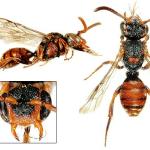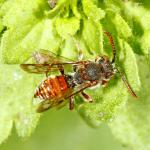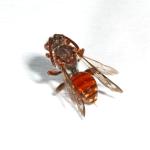Nomada rufilabris THOMSON 1870
Southern England, with records from South Devon, Dorset (Mortimer 1908; The Natural History Museum London), South Hampshire (Else 1995; M. Edwards, pers. comm.), East Sussex, East Kent (Butterfield 1921), Berkshire, Surrey (D B Baker, pers. comm.), London (Perkins 1917) and Essex (Beaumont 1903; P. Harvey, pers. comm.). A rare species with few recent records. (The record for Yorkshire by J.T. Burn (1975) is based on a misidentification of Nomada flavoguttata.). Widely distributed in Europe. It has also been reported from Japan.
Listed as Endangered (RDB1) by Shirt (1987) and Falk (1991).
It shares the same habitat as its Andrena host: for example, open woodland and grassland.
Univoltine; early May to June.
A cleptoparasite of the mining bee Andrena labiata (Perkins 1919a, Butterfield 1921, Westrich 1989), though considerably rarer than this species and absent from most of its nesting sites.
Buttercup (Ranunculus sp.), germander speedwell (Veronica chamaedrys) and silverweed (Potentilla anserina).
None reported.
Profile written: 2005
Updated: 22/12/2011




